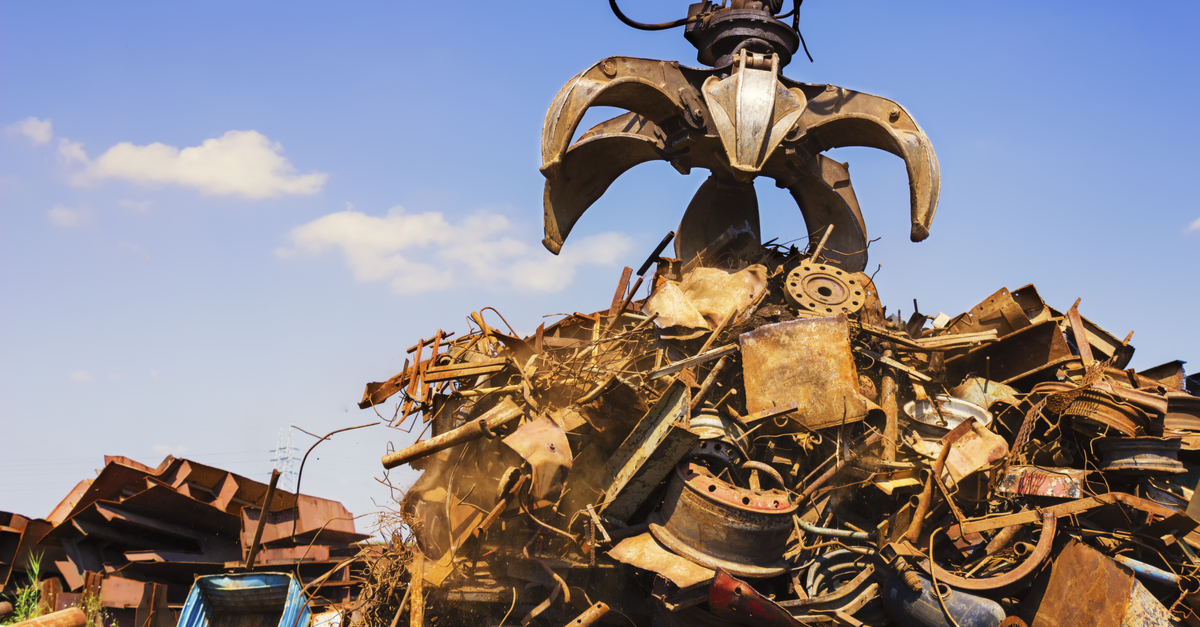Metal from Ukraine: who buys and how much the country earns
22 May 21:14
In April 2025, Ukraine significantly increased its exports of ferrous scrap, reaching 46,321 tons. This is 16% more than in March and 95% more than in April 2024, "Komersant Ukrainian" writes, citing the business media organization Kallanish Commodities.
Poland remained the main importer, taking in 38,310 tons, up 44.5% month-on-month. Total revenue from ferrous scrap exports in April amounted to USD 17.3 million, up 60.1% compared to March and 90% compared to April 2024.
In January-April 2025, Ukraine exported 127,209 tons of scrap, up 45.5% year-on-year. Poland remained the key importer with 114,240 tons. Small shipments were also sent to Greece and Germany. Total export revenues for the first four months of the year increased by 39.4% to USD 39.3 million.
Earlier, the Ministry of Economy of Ukraine proposed to introduce licensing and quotas for ferrous scrap exports, setting a zero quota for 2025. This was done to prevent the transshipment of scrap from Ukraine via the EU to large foreign markets.
In 2021, the Verkhovna Rada of Ukraine increased the export duty on ferrous scrap to €180 per ton ($204). However, a minimum duty applies to shipments to the European Union.
In 2024, Ukraine exported 293,190 tons of scrap, up 60.7% from 2023. Poland accounted for the bulk of exports (81.8%), followed by Greece (13.7%) and Germany (3.2%). Revenue from these exports amounted to USD 91.3 million, up 73.2% year-on-year.
The Ukrainian Association of Secondary Metals “UAVtormet” predicted that by the end of 2025, the volume of scrap exports could reach 350 thousand tons, reflecting a further increase of almost 20%.
At the same time, Ukrainian steelmakers increased their scrap purchases by 37% year-on-year in 2024, to 1.7 million tons. Domestic scrap supplies to Ukrainian enterprises increasedby 30% to 1.34 million tons.
The Association expects scrap consumption to decline to 1.1-1.2 million tons this year due to the projected decline in steel production, which they expect to fall to 6.5-6.8 million tons in 2025. In 2024, steel production in Ukraine increased by 21.6% to 7.58 million tons.
Thus, despite the growth in scrap exports, Ukraine faces challenges in meeting the domestic needs of the steel industry and the need to regulate exports to preserve strategic raw materials.
Key challenges for the Ukrainian steel industry in 2025
In April 2025, Metinvest Group’s Chief Operating Officer, Alexander Mironenko, announced the main challenges facing the Ukrainian steel industry in 2024-2025. In his opinion, these are three key issues: rising tariffs from state monopolies, a shortage of scrap, and a staff shortage.
Rising tariffs hit production costs
Mironenko reminded that since 2021, the electricity transmission tariff in Ukraine has increased 2.3 times, the cost of gas transportation has quadrupled, and railway tariffs have risen by 70-140%. These changes have made it much more difficult for steelmakers to operate. For example, the high cost of energy and logistics is the reason why Ingulets Mining and Processing Plant is still not operating.
State monopolies are simply shifting their financial problems onto industry. We call for a revision of this policy and a constructive dialog. For example, Ukrzaliznytsia is currently considering raising tariffs by another 37%. If this decision is made, national producers may not be able to compete,” explained Myronenko.
Scrap: export instead of production
Another critical problem is the rapid growth of ferrous scrap exports. The volume of raw material exports has increased sixfold, which jeopardizes the operation of the domestic steel industry. Mr. Myronenko emphasized that it is more profitable for the country to process 1 ton of scrap domestically: it provides $1,200 in foreign exchange earnings and about UAH 15,000 in tax revenues. Loss of such raw materials means loss of foreign exchange earnings and jobs.
Staff shortage is exacerbated by mobilization
The third challenge is the shortage of labor. According to the company’s estimates, the staff shortage is 10-15% of the total number of required personnel. At the same time, official employment often turns into a summons to the military commissariat for employees.
We do not hide people and do not put them in the shadows, but it turns out that official employment turns into sending people to the front. This creates additional risks and reduces people’s motivation to work. We are currently negotiating with the Ministry of Defense to work out a compromise mechanism and save jobs,” emphasized Mr. Myronenko.
Читайте нас у Telegram: головні новини коротко









